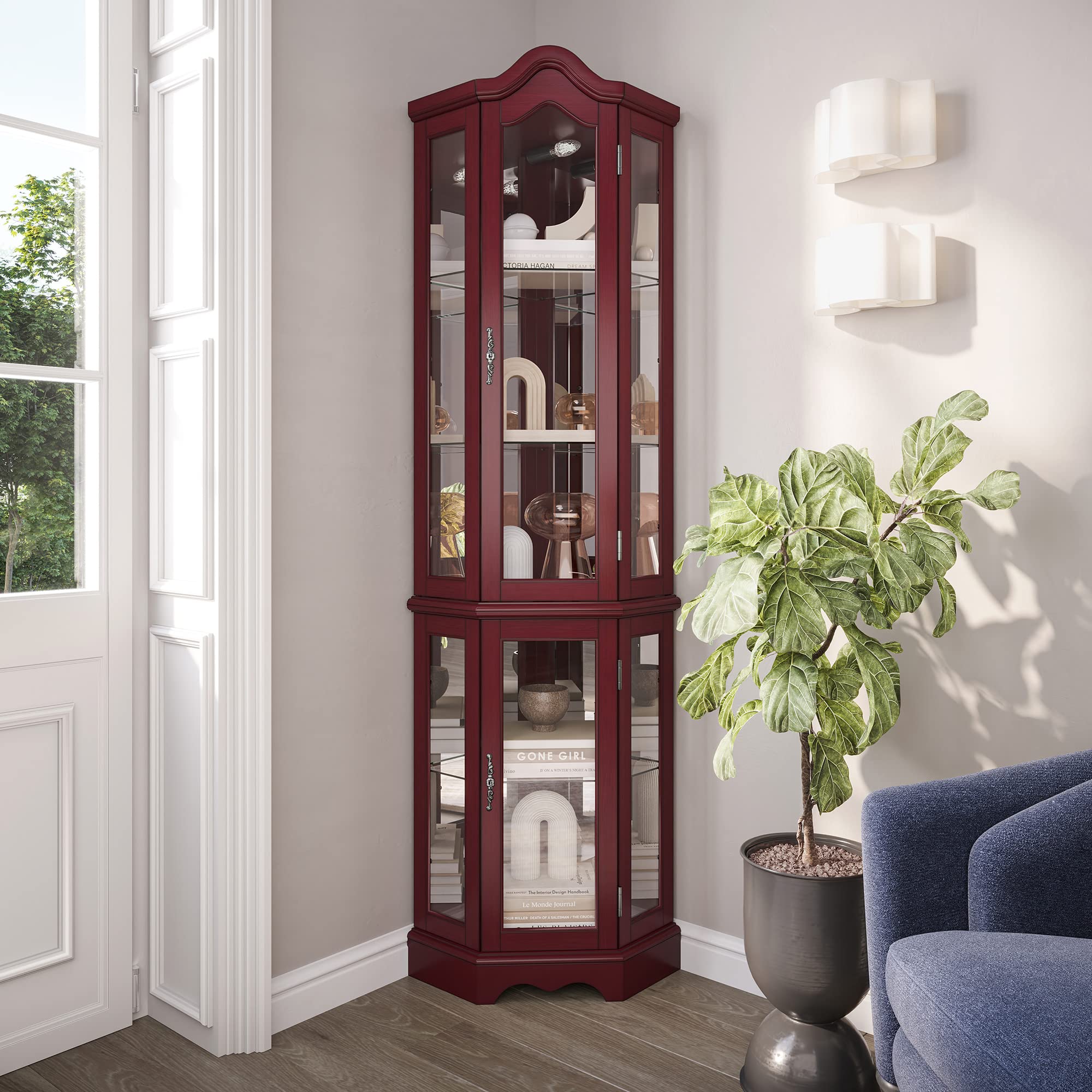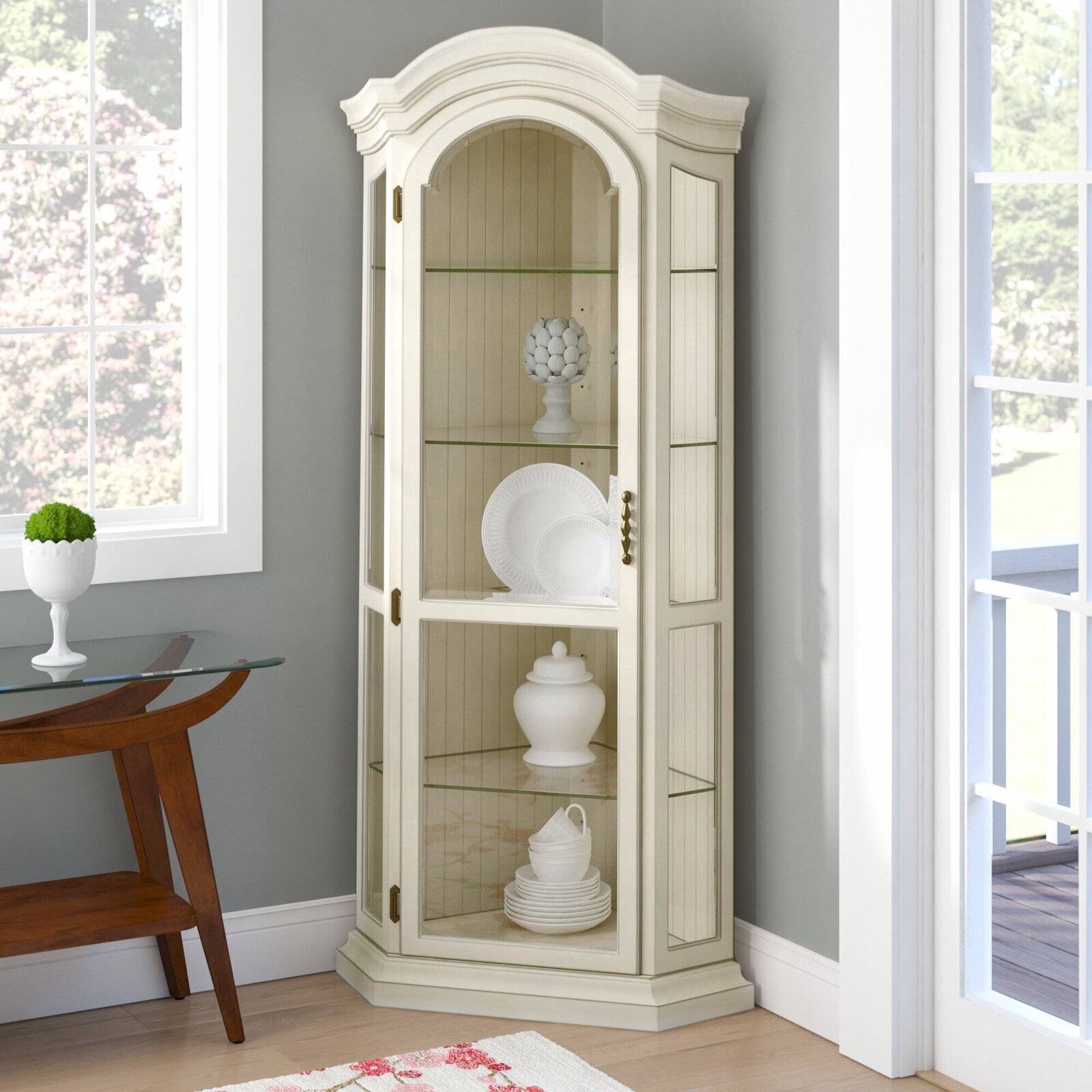The Allure of DIY Corner China Cabinets

Building your own corner china cabinet is more than just a project; it’s a journey of creativity and satisfaction. While you could easily purchase a pre-made cabinet, crafting your own offers a unique blend of personal expression, cost-effectiveness, and the joy of bringing your vision to life.
Benefits of a DIY Approach
Building a corner china cabinet yourself provides numerous advantages over purchasing a pre-made one. These benefits include:
- Cost-Effectiveness: DIY projects often allow you to save money compared to buying a ready-made cabinet. You can choose less expensive materials and avoid the markup associated with retail products.
- Customization: DIY gives you complete control over the design, size, and features of your cabinet. You can personalize it to perfectly complement your existing decor and style.
- Unique Style: A DIY cabinet offers a chance to create something truly unique and one-of-a-kind. You can incorporate personal touches and design elements that reflect your individual taste.
- Sense of Accomplishment: Completing a DIY project, especially one as intricate as a corner china cabinet, provides a profound sense of satisfaction and accomplishment. You’ll have the pride of knowing you created something beautiful and functional with your own hands.
Creative Freedom and Personalization
The true beauty of a DIY corner china cabinet lies in its potential for personalization. You can choose the wood, stain, and hardware that best suit your style and preferences. You can also incorporate unique design elements, such as decorative moldings, glass panels, or even built-in lighting.
- Wood Selection: From classic hardwoods like cherry and walnut to more affordable options like pine or maple, you have a wide array of wood choices to match your budget and aesthetic.
- Stain and Finish: A variety of stains and finishes are available, allowing you to create a look that ranges from rustic to modern. You can even experiment with different techniques to achieve unique textures and patterns.
- Hardware: Handles, knobs, and hinges come in countless styles, offering endless opportunities to personalize your cabinet’s appearance. You can choose from traditional brass, modern chrome, or even antique finishes to complement your design.
“The real joy of DIY is in the process of creating something unique and personal. It’s about expressing your creativity and turning your vision into reality.”
Planning Your DIY Corner China Cabinet

Planning your DIY corner china cabinet is crucial for a successful project. This step involves designing a cabinet that fits your space and style, identifying the necessary materials, and compiling a comprehensive list of tools.
Designing Your Corner China Cabinet
Designing your corner china cabinet involves considering its size, style, and functionality. It’s essential to create a design that complements your existing decor and maximizes storage space.
- Space Considerations: Measure the available corner space carefully, including the height, width, and depth. Determine the desired cabinet dimensions based on the available space, ensuring sufficient clearance for doors and drawers.
- Style Considerations: Choose a style that complements your existing decor, such as traditional, modern, or farmhouse. Consider the cabinet’s finish, materials, and hardware to achieve the desired aesthetic.
- Functionality Considerations: Determine the intended use of the cabinet. Consider the number of shelves, drawers, and other features required to store your china, glassware, and other items.
Identifying Materials
Identifying the necessary materials is a critical step in building your corner china cabinet. Selecting the right materials ensures durability, stability, and aesthetic appeal.
- Wood Types: Choose a wood type that suits your budget and desired aesthetic. Hardwoods like oak, maple, and cherry offer durability and a classic look. Softwoods like pine and cedar are more affordable but may require more care.
- Hardware: Hardware includes hinges, drawer slides, knobs, and pulls. Select high-quality hardware for longevity and ease of use. Consider the style of the hardware to match the overall aesthetic of the cabinet.
- Finishing Supplies: Finishing supplies include paint, stain, varnish, and sealant. Choose finishing products that protect the wood and enhance its natural beauty. Consider the desired finish, such as glossy, matte, or distressed.
Tools
Having the right tools is essential for a smooth and successful DIY project.
- Basic Tools: Basic tools include a measuring tape, pencil, saw, hammer, screwdriver, drill, and sander.
- Specialized Tools: Specialized tools may include a router, table saw, miter saw, and clamps. These tools may be necessary for more complex cuts and shaping.
- Safety Equipment: Always wear safety glasses, ear protection, and gloves when working with power tools. Proper safety equipment protects you from injury.
Construction and Assembly

Once you’ve got your plans and materials, it’s time to get your hands dirty and start building! The construction process involves cutting, joining, and securing the wood components to create the cabinet frame, followed by installing shelves, drawers, and doors.
Building the Cabinet Frame, Diy corner china cabinet
The cabinet frame forms the foundation of your china cabinet, providing structural support and defining its overall shape. It’s typically made from plywood or solid wood, depending on your preference and budget. Here’s how you can build a sturdy cabinet frame:
- Cutting the Wood: Using a saw, carefully cut the wood pieces to the dimensions specified in your plans. Ensure accurate measurements to ensure a well-fitting frame.
- Joining the Wood: There are various methods for joining wood pieces, including:
- Pocket Holes: This technique involves drilling angled holes on the edges of the wood pieces and using screws to join them. It provides strong and hidden connections.
- Dowels: Dowels are cylindrical wooden rods inserted into pre-drilled holes to join wood pieces. They offer a simple and sturdy connection.
- Mortise and Tenon: This traditional joinery method involves creating a recess (mortise) in one piece of wood and a corresponding projection (tenon) on the other. It’s a strong and aesthetically pleasing joint.
- Securing the Joints: After joining the wood pieces, use glue and screws to secure them permanently. Ensure the glue is evenly spread and the screws are driven in straight to avoid splitting the wood.
Installing Shelves, Drawers, and Doors
Once the cabinet frame is complete, you can move on to installing shelves, drawers, and doors.
Installing Shelves
- Determining Shelf Placement: Plan the height and spacing of your shelves based on the size and shape of your china collection. Consider the weight of the items you’ll be storing.
- Cutting Shelf Material: Choose plywood or solid wood for your shelves. Cut the shelves to the desired dimensions using a saw.
- Installing Shelf Supports: Use shelf brackets or shelf pins to support the shelves within the cabinet frame. Ensure the supports are securely attached and can handle the weight of the shelves and their contents.
Installing Drawers
- Choosing Drawer Slides: Drawer slides are essential for smooth and easy drawer operation. Consider ball-bearing slides for effortless movement and durability.
- Constructing Drawer Boxes: Cut and join the wood pieces to create drawer boxes. Ensure the dimensions are compatible with the drawer slides.
- Attaching Drawer Fronts: Choose drawer fronts that complement the cabinet’s style. Attach them to the drawer boxes using glue and screws.
- Installing Drawer Slides and Boxes: Attach the drawer slides to the cabinet frame and the drawer boxes. Ensure the slides are level and aligned for proper operation.
Installing Doors
- Choosing Door Styles: Select door styles that match your china cabinet’s design and complement your home’s décor. Consider glass doors to showcase your china collection.
- Constructing Doors: Cut and join the wood pieces to create door frames. Use glass panes for glass doors or solid wood panels for traditional doors.
- Attaching Door Hinges: Choose durable hinges that can handle the weight of the doors. Install them on the door frames and the cabinet frame.
- Installing Door Handles: Select door handles that match the cabinet’s style. Install them on the doors for easy opening and closing.
Finishing the Cabinet
Once the construction and installation are complete, it’s time to give your china cabinet a final touch with paint, stain, or varnish.
- Preparing the Surface: Sand the cabinet frame, shelves, drawers, and doors to create a smooth surface for paint, stain, or varnish application.
- Choosing a Finish: Consider your personal preference and the overall style of your china cabinet when choosing a finish. Paint provides a variety of colors and finishes, while stain enhances the wood’s natural grain, and varnish protects the wood from scratches and moisture.
- Applying the Finish: Apply the paint, stain, or varnish evenly and carefully, following the manufacturer’s instructions. Allow sufficient drying time between coats.
A DIY corner china cabinet can be a stunning focal point in your dining room, especially when you pair it with a complementary color scheme. The elegance of a gray kitchen cabinets black granite countertop would perfectly complement the delicate china and crystal you display.
The dark granite would provide a striking contrast to the lighter wood tones of the cabinet, creating a sense of depth and sophistication.
A DIY corner china cabinet can be a beautiful addition to any home, showcasing your prized possessions and adding a touch of elegance. But if you’re looking for a more modern solution to store your media collection, a sleek black media storage cabinet could be the perfect fit.
No matter your style, a well-designed storage solution can help you organize and display your treasures with pride.
